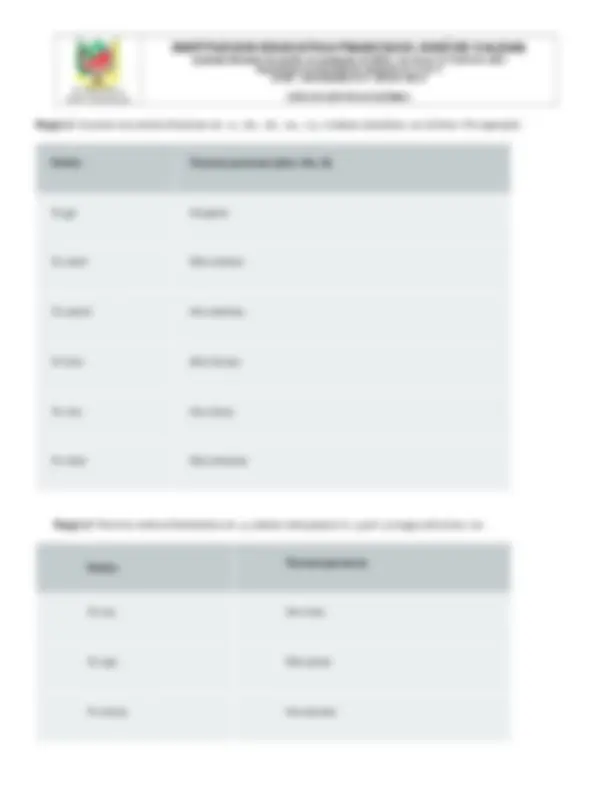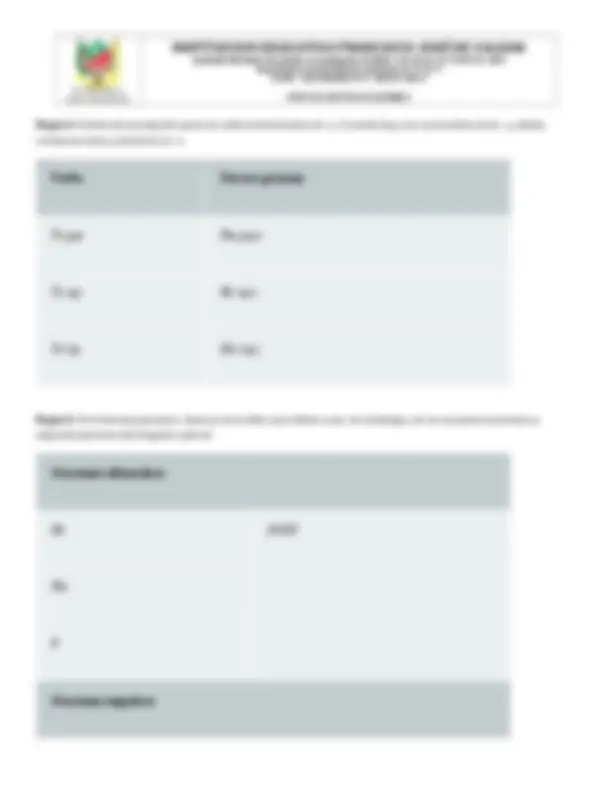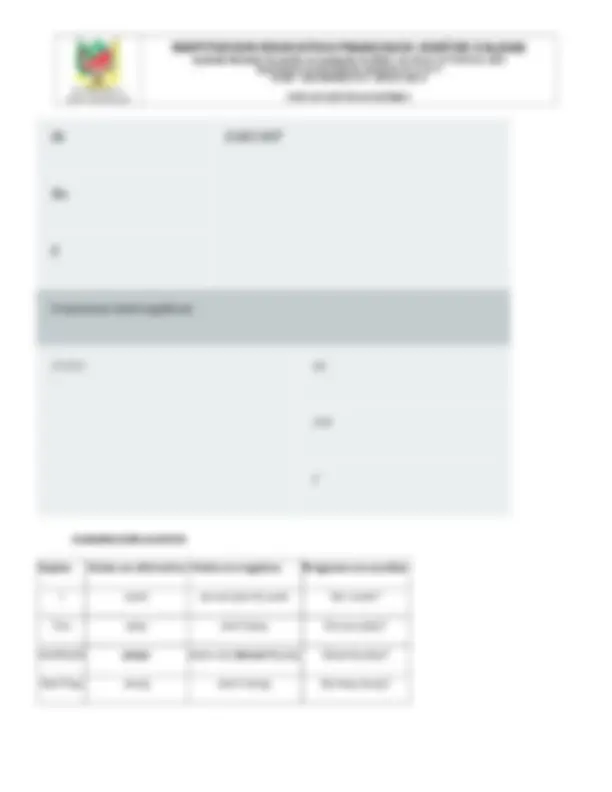





Study with the several resources on Docsity

Earn points by helping other students or get them with a premium plan


Prepare for your exams
Study with the several resources on Docsity

Earn points to download
Earn points by helping other students or get them with a premium plan
Community
Ask the community for help and clear up your study doubts
Discover the best universities in your country according to Docsity users
Free resources
Download our free guides on studying techniques, anxiety management strategies, and thesis advice from Docsity tutors
Tienen que leer muy bien para poder desarrollar cualquier
Typology: Summaries
1 / 6

This page cannot be seen from the preview
Don't miss anything!




NIT 890501662- 5 DANE 154 810003020 Aprobado Mediante Resolución de Aprobación Nº 0 06811 del 30 de OCTUBRE de 20 23 Expedida por la Secretaría de Educación de N. de S DANE: 154810003020 RUT: 890.501.662- 5 ÁREA DE GESTIÓN ACADÉMICA
1. Realización de la actividad: ICFES WORD En esta actividad van a colocar como titulo ICFES WORD, luego van a recortar cada señal (ósea cada dibujo con su pregunta) y la pegan en sus cuadernos, el ultimo cuadritos que es el cuadro de respuestas van a rellenar la respuesta correcta. 1. What does this sign mean? A. You can eat here. B. You can drink here. C. You cannot eat or drink here. D. Only drinks are allowed. 2. Where do you usually see this sign? A. In a bathroom. B. On a TV screen. C. Near a door. D. On a computer. 3. What does this sign tell you? A. You can touch the object. B. You must clean it. C. You should repair it. D. You must not touch it. 4. What can you find in this place? A. A kitchen. B. Bathrooms. C. A classroom. D. A bedroom.
NIT 890501662- 5 DANE 154 810003020 Aprobado Mediante Resolución de Aprobación Nº 0 06811 del 30 de OCTUBRE de 20 23 Expedida por la Secretaría de Educación de N. de S DANE: 154810003020 RUT: 890.501.662- 5 ÁREA DE GESTIÓN ACADÉMICA
5. What should drivers do when they see this sign? A. Drive fast near schools. B. Stop and park immediately. C. Drive slowly and be careful. D. Pick up children quickly.
SEGUNDO TEMA: Simple Present (Presente Simple) El Present Simple en inglés es un tiempo verbal que se utiliza para describir acciones habituales, hechos generales, y situaciones permanentes. También se usa para expresar rutinas, instrucciones, y planes futuros que ya están programados. REGLAS Regla 1: se le agrega S al verbo en tercera persona del singular (she, he it) Verbo Tercera persona (she, He, It) To walk He walks To live She lives To listen He listens
NIT 890501662- 5 DANE 154 810003020 Aprobado Mediante Resolución de Aprobación Nº 0 06811 del 30 de OCTUBRE de 20 23 Expedida por la Secretaría de Educación de N. de S DANE: 154810003020 RUT: 890.501.662- 5 ÁREA DE GESTIÓN ACADÉMICA Regla 4 : Existe otra excepción para los verbos terminados en - y. Cuando hay una vocal antes de la - y, debes conservar esta y adicionar la - s.
Regla 5 : En la tercera persona, does es el auxiliar que debes usar; sin embargo, do se usa para la primera y segunda persona del singular y plural
NIT 890501662- 5 DANE 154 810003020 Aprobado Mediante Resolución de Aprobación Nº 0 06811 del 30 de OCTUBRE de 20 23 Expedida por la Secretaría de Educación de N. de S DANE: 154810003020 RUT: 890.501.662- 5 ÁREA DE GESTIÓN ACADÉMICA
Sujeto Verbo en afirmativa Verbo en negativa Pregunta con auxiliar I work do not (don’t) work Do I work? You play don’t play Do you play? He/She/It plays does not ( doesn’t ) play Does he play? We/They study don’t study Do they study?